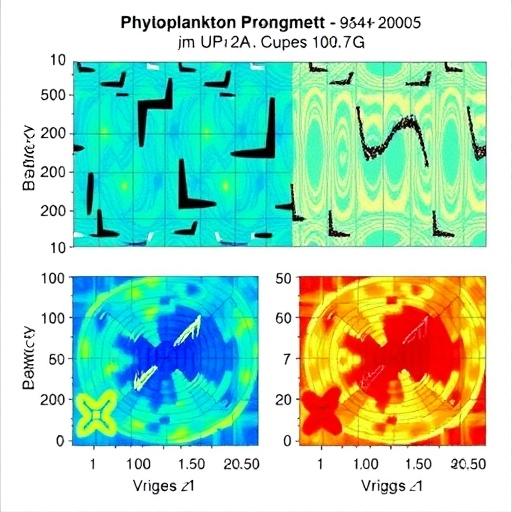In the vibrant ecosystems of aquatic environments, phytoplankton plays a pivotal role as the foundation for food webs while also significantly contributing to biogeochemical cycles. A recent study puts a spotlight on the phytoplankton community’s response to water physicochemical characteristics over varying seasons at the Ubol Reservoir in Khon Kaen, Thailand. This research not only sheds light on the ecological dynamics influenced by environmental changes but also underscores the necessity for continuous monitoring of freshwater resources.
The Ubol Reservoir, a crucial water body in northeastern Thailand, serves multiple purposes, including irrigation, fishery, and recreational activities. Understanding the ecological balance within such reservoirs is vital, as it directly influences the livelihoods of local communities and the overall health of aquatic ecosystems. Phytoplankton, as the primary producers in these waters, are responsive indicators of environmental quality and can reflect changes triggered by anthropogenic activities or natural seasonal shifts.
The study conducted by Somdee, Butsat, and Somdee meticulously analyzed various physiochemical parameters, including temperature, pH, dissolved oxygen, and nutrient concentrations. Seasonal fluctuations in these parameters were systematically assessed to reveal their effects on phytoplankton diversity and density. This methodical approach is essential, as shifts in any one of these factors can precipitate significant changes in phytoplankton communities, impacting food webs and nutrient cycling within the reservoir.
Temperature, in particular, plays a critical role in regulating phytoplankton growth, as it affects metabolic rates and reproduction. The researchers observed how seasonal temperature variations led to distinct shifts in the composition and abundance of phytoplankton species. Such findings emphasize the intricate adaptations of these organisms and their potential vulnerability to climate change, thereby highlighting a need for further research into how future climate scenarios could impact freshwater ecosystems globally.
In addition to temperature, the study examined the role of nutrient availability, particularly nitrogen and phosphorus. These nutrients are essential for phytoplankton growth, and their concentrations can vary significantly with the seasons. The authors noted that during periods of increased runoff, nutrient levels surged, fostering blooms of certain phytoplankton species. However, this phenomenon can lead to detrimental algal blooms, which could result in oxygen depletion and subsequent fish kills, underlining the need for effective management strategies in reservoir ecosystems.
Dissolved oxygen levels are another vital aspect of water quality that influences phytoplankton dynamics. The researchers found that lower oxygen concentrations during warmer months correlated with declines in certain phytoplankton populations. This relationship is particularly alarming, as it suggests that rising temperatures—potentially linked to global warming—may exacerbate hypoxic conditions, threatening biodiversity and ecosystem functioning in freshwater habitats.
A fascinating outcome of this research was the identification of specific phytoplankton taxa that served as bioindicators of ecological health in the Ubol Reservoir. Such taxa were linked with specific physicochemical conditions, allowing for a clearer understanding of how phytoplankton communities can reflect the overall state of their environment. Employing these bioindicators not only aids in assessing water quality but also enhances the management of aquatic resources by providing timely and actionable information.
The study added a layer of richness to our understanding of phytoplankton interactions, illustrating how complex and interdependent these relationships are in the context of environmental changes. The findings not only resonate within the scientific community but also highlight the pressing need for conservation efforts aimed at preserving freshwater ecosystems in light of the increasing pressures of climate change and human activities.
Ultimately, this research showcases the intricate dance between phytoplankton and their aquatic environments. By illustrating the responses of these organisms to seasonal variations in water chemistry, the authors contribute to a growing body of knowledge that stresses the importance of careful monitoring and management of freshwater systems. As human encroachment continues to disrupt these vital ecosystems, studies such as this serve as a clarion call to prioritize environmental stewardship in the face of impending ecological challenges.
The implications of this research extend far beyond the Ubol Reservoir, suggesting that similar patterns may be observed in lakes and reservoirs worldwide. As global temperatures rise and precipitation patterns shift due to climate change, understanding the resilience and adaptability of phytoplankton becomes increasingly crucial for anticipating and mitigating the impacts on aquatic ecosystems.
As we look toward the future, the findings presented by Somdee, Butsat, and Somdee might be integral in developing management strategies for freshwater resources. By fostering a deeper understanding of the relationships between physicochemical parameters and phytoplankton dynamics, we can better prepare for the challenges posed by environmental changes, ensuring the sustainability of these essential ecosystems for generations to come.
In conclusion, the intricate interplay between water quality and phytoplankton community response understates a broader narrative about environmental health and resilience. As we advance our knowledge through research like this, it is imperative to act upon these insights to protect aquatic ecosystems, enhance biodiversity, and secure the benefits they provide to humanity and the planet.
Subject of Research: Phytoplankton community response to water physicochemical characteristics.
Article Title: Phytoplankton community response to water physicochemical characteristics under seasonal variation at the Ubol Reservoir, Khon Kaen, Thailand.
Article References:
Somdee, A., Butsat, W. & Somdee, T. Phytoplankton community response to water physicochemical characteristics under seasonal variation at the Ubol Reservoir, Khon Kaen, Thailand.
Environ Sci Pollut Res (2025). https://doi.org/10.1007/s11356-025-37019-6
Image Credits: AI Generated
DOI:
Keywords: Phytoplankton, water quality, seasonal variations, Ubol Reservoir, ecological health, biodiversity, climate change.




